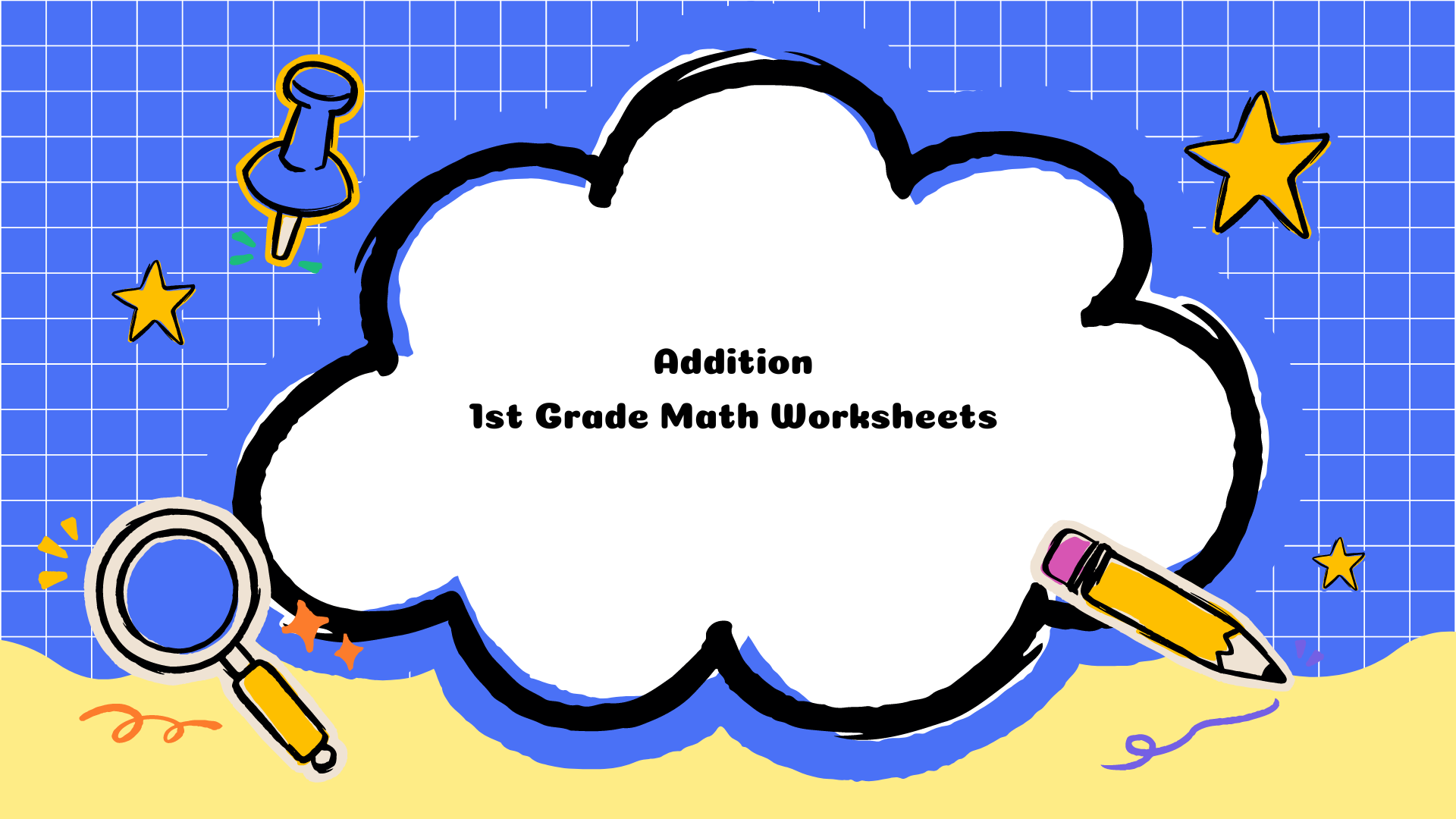
Table of Contents
Grade 1 Addition Worksheets
When introducing young learners to the world of math, addition is one of the fundamental concepts they will encounter. Our Grade 1 addition worksheets are designed to ease students into this essential skill, starting with simple exercises and gradually increasing in complexity. Here’s an overview of what these worksheets cover:
Adding with Objects or Pictures
Adding with Pictures (Sums to 10):
Young learners can start their addition journey by counting objects or pictures. This method helps them visualize the concept of adding two numbers together. For example, if there are 3 apples and 2 oranges, students will learn to count them all to find the sum.
Vertical Addition with Objects:
To help students understand addition in a more structured format, they will practice adding objects in vertical columns. This sets the foundation for understanding how numbers align when adding larger sums in later grades.
Addition Sentences:
Once comfortable with counting objects, students can progress to forming and solving addition sentences. For example, “3 + 2 = 5” teaches them how to write and solve equations.
Adding with Pictures (Sums to 20):
As students gain confidence, they can move on to adding with pictures where sums reach up to 20, continuing to reinforce their understanding through visualization.
Number Lines
Adding with Number Lines:
Number lines are a great tool for visual learners. Students will use number lines to add two numbers by hopping forward from a starting number, reinforcing the concept of moving towards a sum.
Addition Sentences and Number Lines:
Combining addition sentences with number lines, students will learn to translate abstract equations into a visual format, helping them grasp the concept more fully.
Adding 3 Numbers with Number Lines:
As a more advanced step, students will practice adding three numbers using a number line, developing their ability to handle more complex addition problems.
Mental Addition
Add Two Numbers – Sum 10 or Less:
These exercises focus on simple mental math, where students practice adding two numbers that result in a sum of 10 or less, such as “2 + 6 = ?”.
Add Two 1-Digit Numbers – Sum 20 or Less:
Building on previous exercises, students will practice mental addition with sums up to 20, like “9 + 8 = ?”.
Number Bonds
Number Bonds – Sums with 8, 9, 10:
Number bonds are an effective way to teach addition by breaking numbers down into pairs. Students will work with sums that equal 8, 9, or 10, filling in the missing number in equations like “4 + __ = 8”.
Adding Using Combinations of 10:
This method involves using known combinations that add up to 10 as a stepping stone to solve other problems. For example, “8 + 5 = 8 + 2 + 3 = 10 + 3 = 13”.
Adding Doubles
Adding Doubles:
A fun and effective way to practice addition is through doubling numbers. Students will solve problems like “4 + 4 = ?”, helping them recognize patterns in addition.
Adding Doubles Plus 1:
This exercise builds on the concept of doubling by adding 1 more, such as “4 + 5 = ?”.
Adding Doubles Plus 2:
Similar to the previous exercise, students will practice doubling a number and adding 2, such as “4 + 6 = ?”.
Adding Doubles Minus 1:
This variation helps students explore subtraction within addition by doubling a number and subtracting 1, like “4 + 3 = ?”.
Adding Doubles and Near Doubles:
Students will practice identifying and solving near-double problems, such as “6 + 8 = ?”.
Harder Mental Addition
Missing Addends – Sum 10 or Less:
In this exercise, students will find the missing number in an equation that results in a sum of 10 or less, such as “2 + __ = 7”.
Missing Addends – Sum 20 or Less:
Students will solve for the missing addend in equations where the sum is 20 or less, such as “2 + __ = 17”.
Adding Multiple Numbers
Add 3 Numbers:
Students will practice adding three numbers together, like “3 + 6 + 5 = ?”.
Add Whole Tens:
This exercise focuses on adding whole tens, such as “20 + 30 = ?”.
Add Whole Tens – Missing Addend:
Students will solve for the missing number in problems that involve adding whole tens, like “__ + 90 = 170”.
Complete the Next Ten:
In this exercise, students will practice adding a number to reach the next ten, like “86 + __ = 90”.
Add 2-Digit and 1-Digit Numbers within the Same Ten:
This worksheet challenges students to add a 2-digit number to a 1-digit number within the same ten, such as “35 + 4 = ?”.
Adding in Columns (No Carrying)
Add 2-Digit and 1-Digit Numbers in Columns – No Carrying:
Students will practice adding numbers in a column format, which helps them prepare for more complex addition.
Add Two 2-Digit Numbers in Columns – No Carrying:
Students will solve problems where two 2-digit numbers are added in columns without carrying.
Add a 2-Digit and a 1-Digit Number in Columns – Missing Addend:
This exercise involves finding the missing number in column addition.
Add Two 2-Digit Numbers in Columns – Missing Addend:
Similar to the previous exercise, students will solve for a missing addend in column addition.
Addition Word Problems
Single Digit Addition Word Problems:
These word problems involve adding single-digit numbers in real-world scenarios.
Addition with Sums 50 or Less:
Students will solve word problems where the sums are 50 or less, helping them apply their addition skills to practical situations.
Add 3 or More Numbers:
This exercise involves word problems that require adding three or more numbers together.
Add/Subtract Word Problems with Mostly Single-Digit Numbers:
Students will practice solving word problems that involve both addition and subtraction with single-digit numbers.
Add/Subtract Word Problems with Numbers Under 50:
These word problems involve adding and subtracting numbers under 50, challenging students to apply their skills in a variety of contexts.
These worksheets are designed to provide a comprehensive and engaging approach to learning addition for first graders. By gradually increasing the difficulty and incorporating various methods, students can build a strong foundation in math that will support them in future learning.






